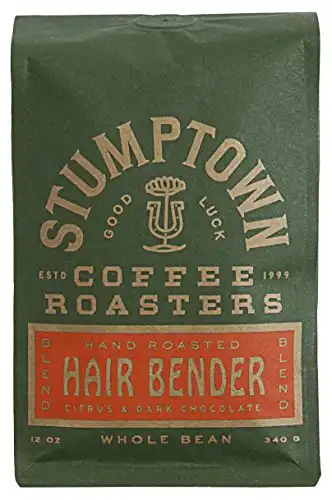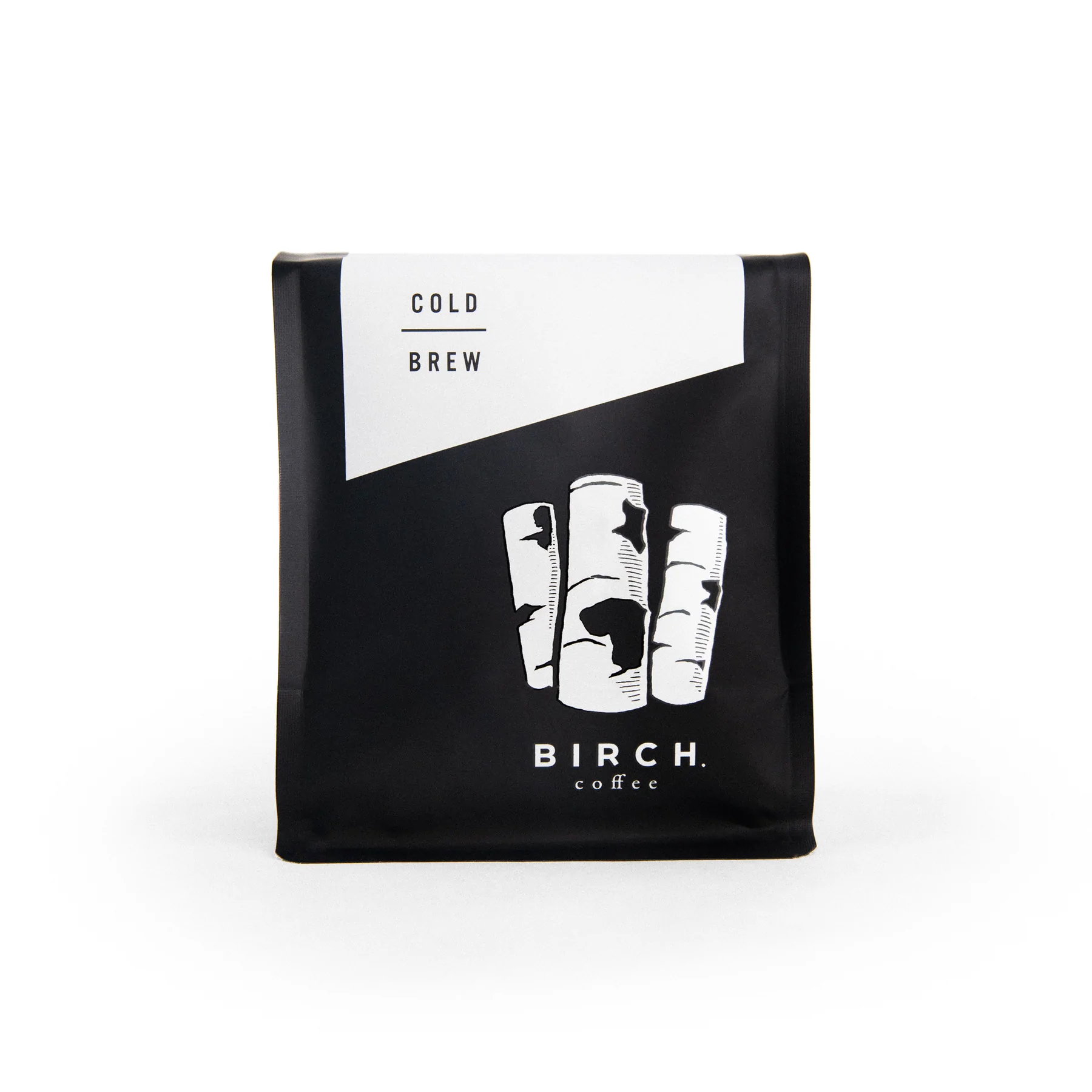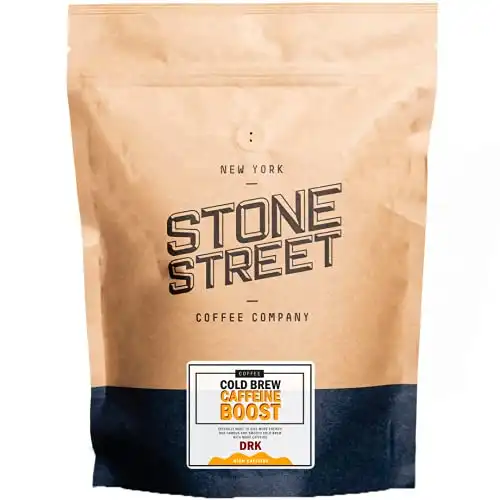Attention coffee lovers! Stop wasting money on cold brew out at coffee shops – make it it at home! Today we’re going to share some of our favorite types of coffee and brew tips for the perfect cup of cold brew coffee.
As much as I love ordering cold brew on tap, making it at home is too simple and affordable to pass up.
No, you won’t get the same nitrous-infused head as a cafe, but home-brewed cold brew still goes down easy with a silky smooth finish.
To me, this drink is always richer and sweeter than hot coffee. And there are a hundred ways to enjoy it.
This article will dig deep into what makes the best coffee beans for cold brew.
It all depends on how you take your coffee. Whether you take yours straight or heavily doctored, I’ll show you how to pick the best coffee beans for your cold brew serving style.
But first, if you need a quick recommendation, here are a few of my favorites.
My Top Picks

This post includes affiliate links.
Detailed Reviews Of Best Coffee Beans For Cold Brew
1. Best Overall – Stumptown Hair Bender
- Hair Bender: The sweet and balanced coffee that started it all. Hair Bender is our most celebrated blend with a flavor profile that shines no matter how you brew it!
- Flavor: Hair Bender relies on coffees from Latin America, Indonesia, and Africa to achieve a complex flavor profile with notes of sweet citrus, dark chocolate, and raisin.
Hair Bender is one of my favorite all-around coffee. It doesn’t matter if you’re new to the coffee scene or have been here a while. This blend does not disappoint.
It’s quite versatile. Coincidentally, Hair Bender is also my top pick for French Press. And it works well for espresso too. If you buy a bag, then you won’t be pigeonholed into only making cold brew.
The beans for this blend are sourced from Indonesia, Africa, and the Americas.
You’ll get a deep and complex flavor that pulls notes from each of those origins. Expect notes of chocolate, cherry and toffee.
Because it’s prepared as a medium roast, you’ll also get some light citrus too.
I like Stumptown’s cold brew blend slightly better. The problem is it’s only seasonally available. Usually, not during the season when I want to make cold brew! And it doesn’t have the same versatility as Hair Bender.
2. Take It Black – Birch Coffee Cold Brew Blend
- Taste: Chocolate, Rich, and Full-Bodied
- From Central America
This Birch Blend is awesome for cold brew and also works well when prepared hot in a French Press. Stop by and try their bottled cold brew if you’re in NY. It’s exquisite!
A bag of these beans is the next best thing for the rest of us. I can’t emphasize enough how sweet they are when cold extracted. Especially if you prefer to take your cold brew black, this is a great option because of how smooth and sweet it is.
These are darker roasts sourced from Central America with chocolate, caramel, and raisin notes. The texture is full-bodied too.
Look no further if you like your cold brew sweet and strong.
3. Dress It Up – Stone Street Cold Brew Caffeine Boost
- Specially made for cold brewing and to give more energy, this blend is optimized to provide a higher caffeine content.
- Specialty small-batch roaster, making artisanal coffee since 2009.
Stone Street is for you if you prefer to dress up your cold brew with milk and sugar.
This Brooklyn roaster prepares its beans with caffeine concentration in mind. So if you plan on diluting your cup, rest assured that it will keep you buzzing.
This blend is made with beans sourced from Colombia and Mexico. The blend contains part Robusta beans which give the blend the namesake ‘caffeine boost.’
The flavor profile is relatively bold and chocolatey. It will cut through any milk and sweeteners added and help you retain a clear coffee flavor. You also might expect to find a few citrus notes.
4. Best Pre-Ground Cold Brew Bags
- 4 pack
- Notes of chocolate and caramel
- USDA certified organic coffee
If you want something easy and don’t want to mess with grinding your own beans, there are great cold brew bag options! I love the pre-ground cold brew bags from Chamberlain coffee.
All you do is take out one of the bags that are already prepackaged with pre-ground beans, put it in your mason jar or other cold brew coffee maker and add water!

This coffee has flavor notes of dark chocolate and sweet caramel.
The first time I used these I followed the instructions to a t but realized when I poured my coffee it was much weaker than I had wanted. You’ll need to play around with this a bit to get the full-bodied flavor you want in your cold brew.
You can get a recipe for a delicious Honey Oat Cold Brew drink on this post!
What To Look For
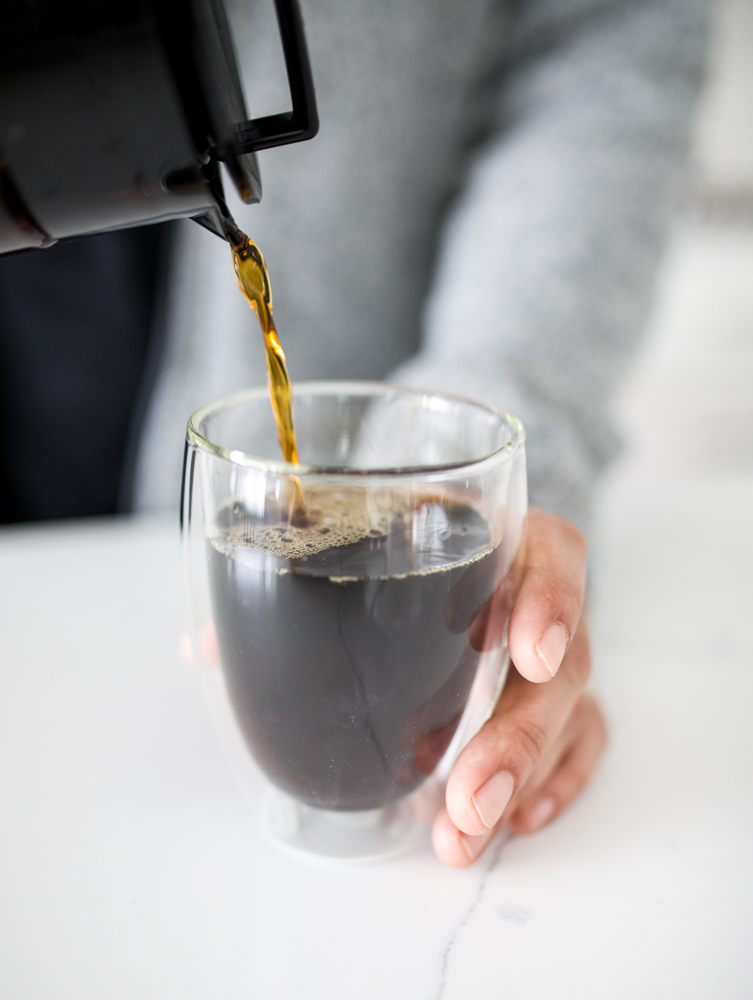
While there are a few “rules of thumb” for picking a good cold brew coffee bean, the truth is that it depends on your personal tastes and how you intend to serve it. Here are a few things to look for and think about when picking your beans.
Serving Style
How do you take your coffee?
Perhaps you like your cold brew straight black or served over ice with oat milk. Or maybe you’re the type of person that prefers mixing with cold water, milk, or sweetener. The truth is that there are 100 ways to do it.
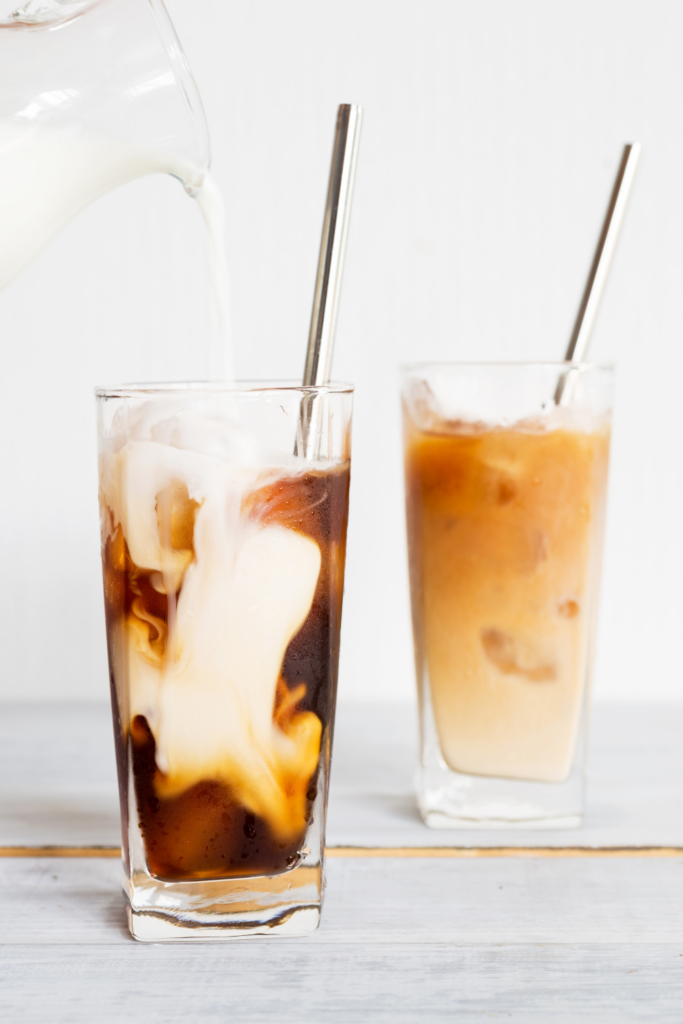
When picking your beans, check the tasting notes first. Crisp and delicate flavors like fruitiness and floral work very well for black coffee. But they’ll get buried when milk and sugar get added.
When dressing your coffee with milk, look for strong, mellow flavors. Chocolate, cinnamon, caramel, nutmeg, and marshmallow are a few examples. For some people, these characteristics can also be overwhelming when taken black.
Know how you take your coffee, check the tasting notes on the bag, and plan accordingly. It goes a long way!
Origin
Does the origin of your coffee matter? Sort of.
The flavor of your coffee is derived from the unique chemistry of the bean you’re using. It has everything to do with when and where the coffee was grown. Environmental factors like soil type, climate, and elevation greatly impact flavor.
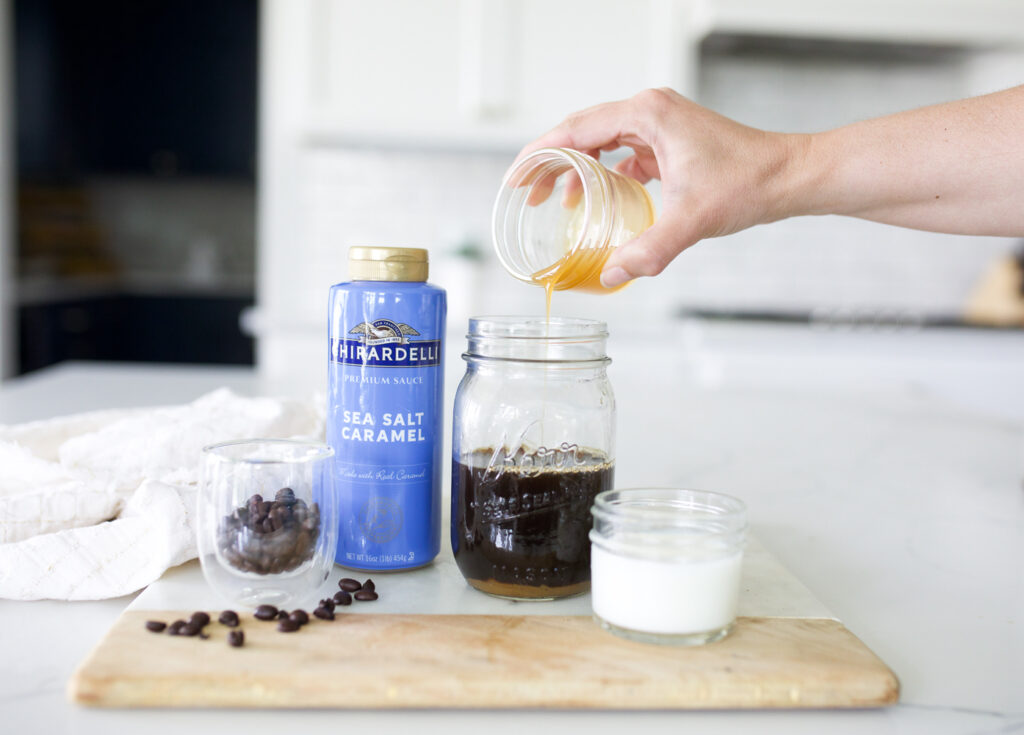
My advice is to try coffee from different places, side-by-side, when you can. Write down the different tastes. Maybe one is sweeter, and the other is brighter. It’s a fun exercise, and you’ll learn something every time.
Few people have trained their palate well enough to distinguish between coffee from one farm to the next. But most people can pick up on regional differences by continent or country.
If you like fruitier tastes, start with African coffee. I especially like Ethiopian guji for its crisp berry flavor. Central American coffee offers a lot of chocolatey and nutty notes and citrus. And Indonesian coffee is consistently the most earthy.
Most roasters also sell “blends” that mix beans from different regions. With a blend, you’ll usually get a more balanced cup.
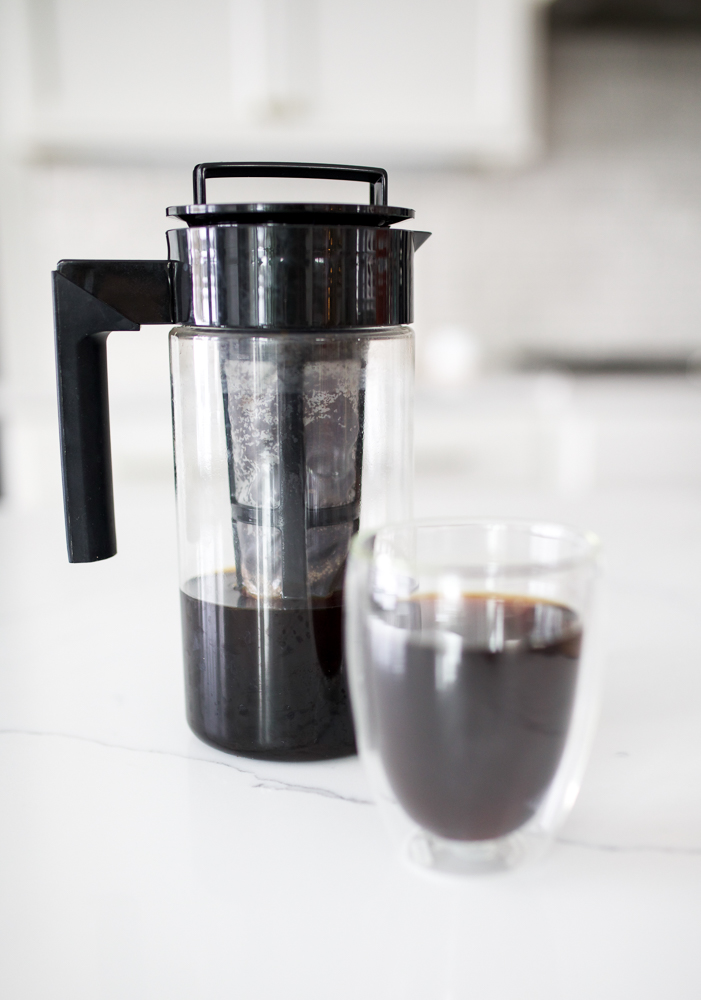
My best advice is (again) to check the roaster’s tasting notes on the package. Try single-origin beans if you’re on a quest to find your favorite flavors. And reach for a blend if your priority is a balanced, easy-drinking coffee today.
Roast Level
When green coffee is roasted, the unique chemistry of the beans gets broken down and creates flavor. Different amino acids are released during different stages of the roasting process.
A dark roast is taken to a higher temperature during roasting. The flavors are often toasty, bittersweet, and chocolatey.
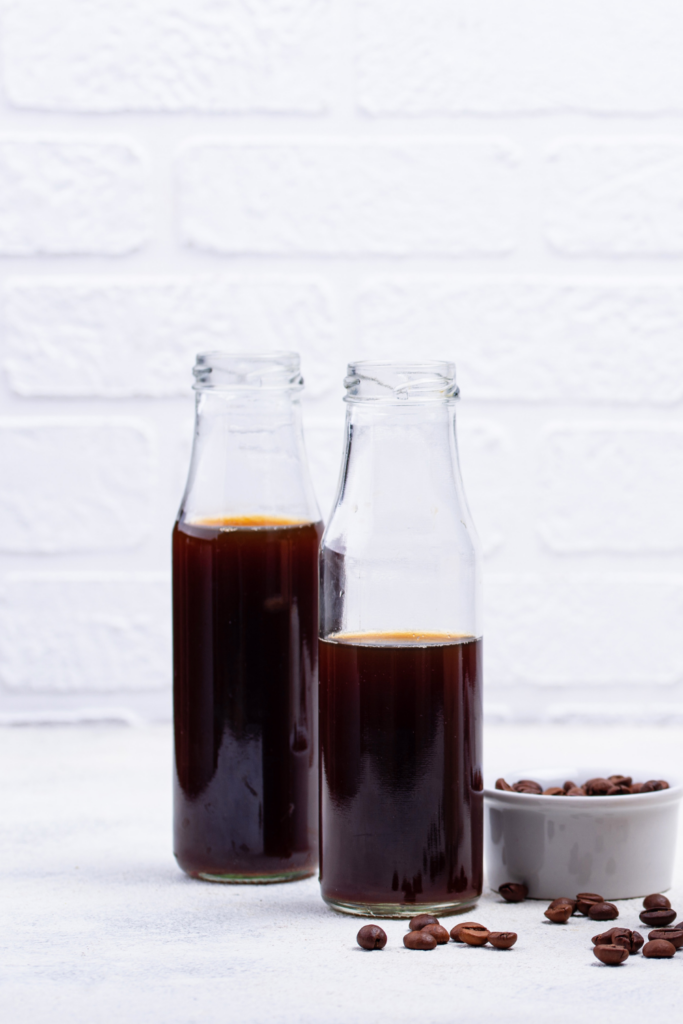
Because cold brewing extracts less bitterness than hot brewing, it’s a smooth way to enjoy a dark roast. If you plan on taking your coffee with milk and sugar, the flavor of dark roast coffee will stand up better.
Stick with a light roast if you like a clean, flowery, and fruity flavor. In my experience, these notes don’t extract as effectively when cold brewing. But it’s nice to enjoy them without the same acidity you’d expect with hot coffee.
As a rule of thumb, the darker the roast is, the less acidity. If you’re looking for a coffee with low acidity go with a dark to medium-dark roast.
Personally, I like using a medium roast for cold press. It’s the best of both worlds.
Freshness
Regardless of how you brew your coffee, the freshness of the coffee beans is critical.
Green coffee lasts for years, but as soon as the beans are roasted, their lifespan starts ticking faster and faster. Roasting starts breaking down the chemical composition of the coffee. And the beans proceed to oxidize quickly afterward.

Always look for coffee that has a roast date printed on the package. For peak flavor, you must brew it within about 3 weeks of the roast date. Otherwise, the flavors dissipate, bitterness increases, and your beans will go stale.
Be sure to store your beans the right way! We have a whole post on the best way to store your coffee beans to keep them fresh. Need a container? Check out some of our favorite coffee containers (psst…an airtight container will make a big difference!).
Grind Size
If you’ve already got fresh coffee beans, grind size is probably the next most important factor.
Grind your whole beans to a medium-coarse consistency, somewhere between what you’d do for a french press and a drip machine. It should look a bit like rough sand.
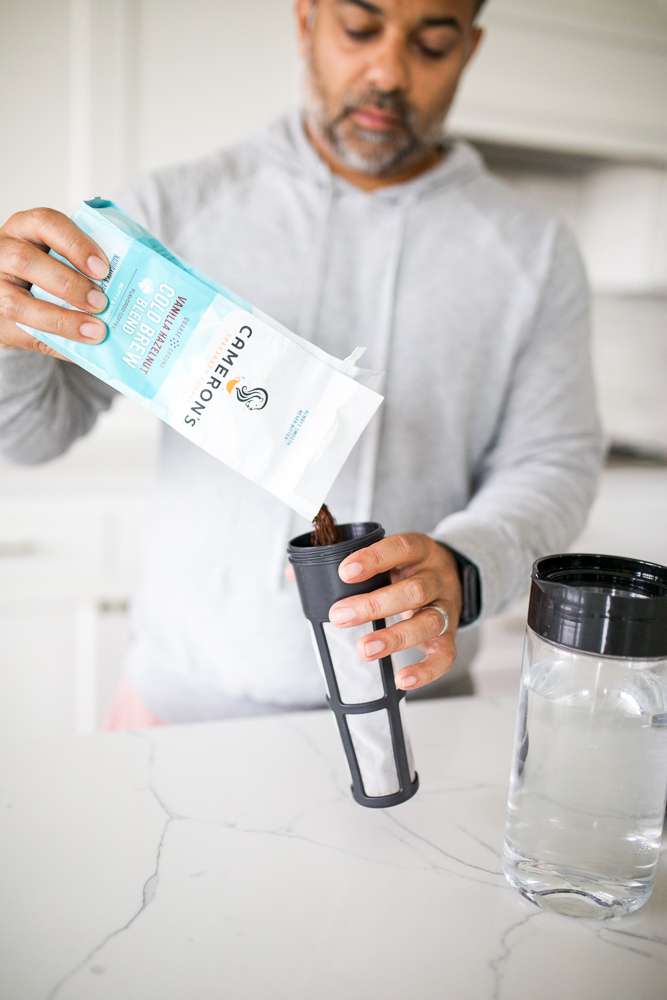
If your grounds look like fine sand, you’ve gone a bit too far.
A coarse grind supports the extended extraction time used for a cold brew. It also ensures the coffee doesn’t jam your filter up (or slip through it) at the end.
It’s always better to buy whole coffee beans. If you’re a decaf lover, we’ve narrowed down 5 of our favorites here! . They stay fresh for longer than pre-ground and packaged beans. Use a burr grinder for a grind that is precise and consistent.
For pre-ground coffee, look for beans packaged for cold brew or French Press.
Cold Brewing Method
You can use a few different devices to prepare the cold brew.
I like a dedicated cold brew maker (mine is very inexpensive on Amazon). You can also using a French Press or mason jar for cold brew.
The cold brewing process is very straightforward.
- Add coffee to the brewing vessel.
- Add filtered water, and stir to ensure that all coffee grounds are saturated.
- Cover and steep on the counter or in the refrigerator.
- Once the coffee is fully infused, pour it into another container for storage and serving.
Use a dose ratio of 1:5 coffee-to-water, measured by weight.
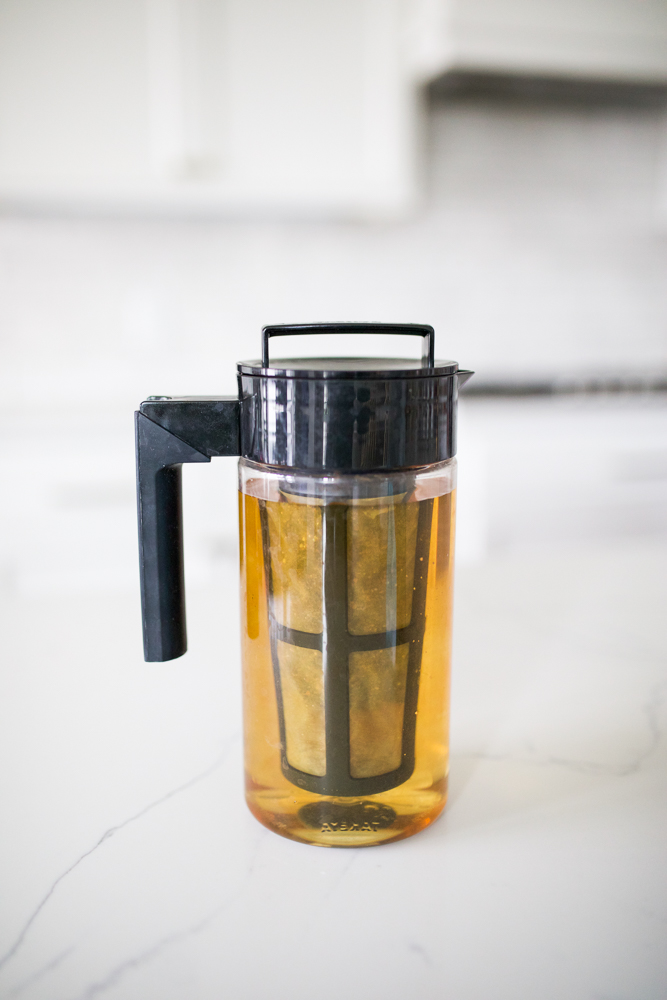
The duration of steeping should be 16-20 hours. If you’re infusing on the countertop, stick to the lower end of that range. And go the full 20 hours if the process happens in a refrigerator.
*Find out our best tips for how long cold brew should steep here!
If you’re looking for a stronger result, adjust the ratio slightly. Don’t steep for longer! If you increase the extraction time too much, your coffee will become bitter and woody.
One argument for steeping in the refrigerator is that you’ll get maximum temperature control from one batch to the next.
Ambient kitchen temperature changes with the seasons, and time of day. Your refrigerator will remain roughly the same temperature every day, always.
Serving Styles
Because cold brew is so smooth, many like to take it black or serve it over ice.
If this sounds like you, try using a cocktail ice cube tray. The bigger the ice cube, the slower it will melt, and your drink will dilute less.
If the cold brew is so concentrated that it gives you jitters, try mixing 1 part coffee and 2 parts water (or milk). I take mine with a coconut oat milk blend that is slightly sweetened.
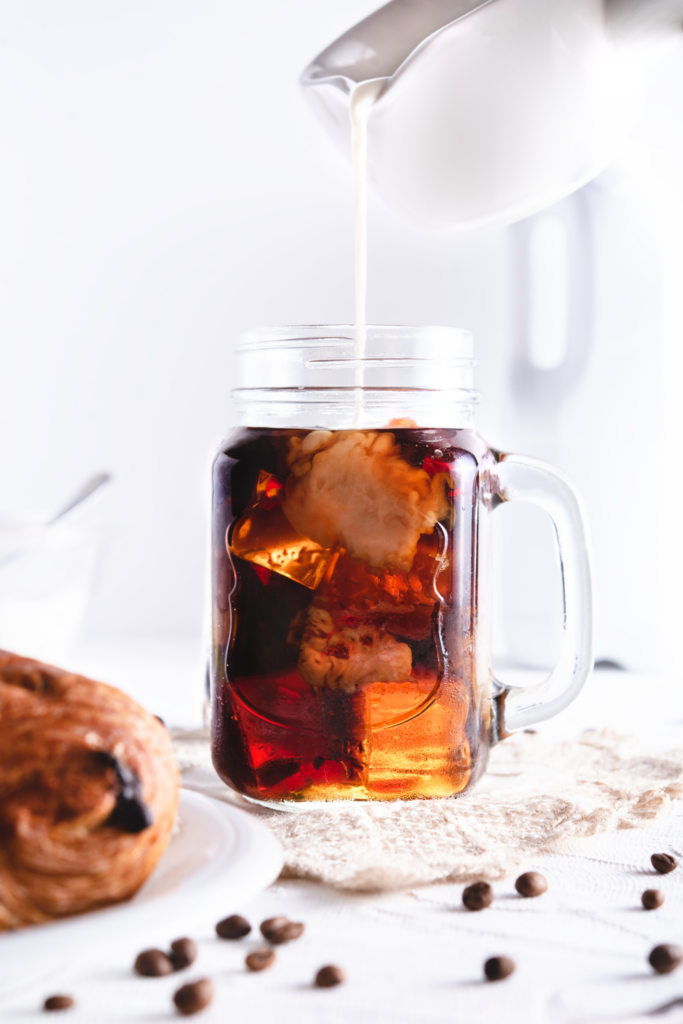
Cold brew is awesome for affogato (with ice cream) and even gets used in several cocktails. The serving possibilities are endless. You may also consider a simple garnish to spruce up your drink like a citrus twist or a mint.
Tips & Tricks
- Ready-To-Drink Ratio – If you don’t love making a cold brew concentrate only to water it down later, try a 1:15 dose ratio for extraction. Especially if you’re on the go, it can be handy to have your drink on the ready with no modifications.
- Wet Grounds – We’re aiming for even extraction, so there are no funky flavors in the batch. It’s important to consistently wet all of the grounds to begin the steeping process. Otherwise, you’ll have some over-extraction and some under-extraction.
- Cold Brew Ice Cubes – Try making ice cubes from your cold brew rather than water. This ensures that the cubes won’t dilute the drink as they melt.
FAQ
Medium and dark roast coffee works great for cold brew. The floral notes of light roast coffee don’t come in as clearly via cold extraction methods. Cold brew allows you to taste dark notes like chocolate, molasses, and hazelnut. Unlike hot extracted coffee, you don’t get as much bitterness.
To prepare cold brew at home, you need coffee, water, and an extraction vessel like a French Press. With so few equipment and ingredients required, cold brew is especially affordable and simple to prepare.
Cold brew extracts more quickly in warmer temperatures and higher pressures. That’s why espresso can be done in 30 seconds, but cold brew requires 16+ hours. Refrigerating your cold brew extraction will slow the process and may require closer to 20 hours to complete. Overextracted cold brew may begin to take on bitter and woody flavors.
Looking for more cold brew related content? Head here!

